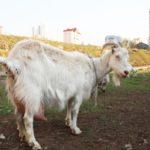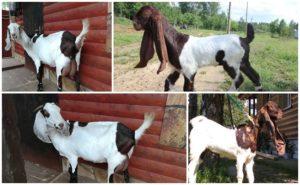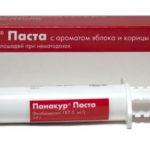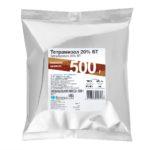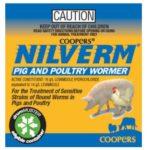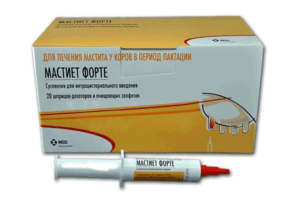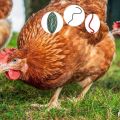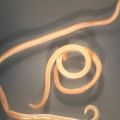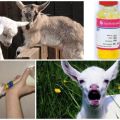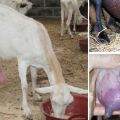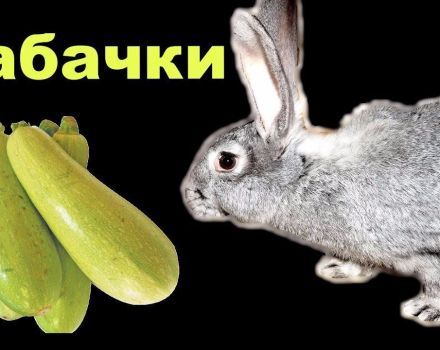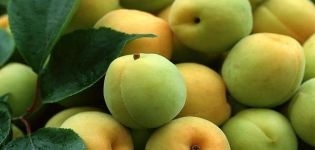Signs and symptoms of worms in goats, how to treat and preventative measures
Worms start in goats as a result of lack of hygiene in the room where livestock is kept, the use of contaminated food and water, and contact with already infested animals. It is important to diagnose worm damage in time and start treating it, since the invasion adversely affects the quality of meat and milk, affects the well-being of the animal, the state of its immune system, and in advanced cases can lead to the death of a goat.
Reasons for infection
Helminthiasis, common worms, is caused by the introduction of parasitic worm larvae into the animal's body. Methods of treatment and diagnosis differ depending on what type of worms the goat is infested with:
- cestodes are flat tapeworms. Initially, they are introduced into the lungs, kidneys and brain, as they grow older, they move into the intestines. A goat can become infected through contact with the feces of domestic and wild animals in the pasture - foxes, cats, wolves, dogs;
- flukes are fluke worms. Causes liver and pancreas damage in goats;
- nematodes - some worms from this group can live and develop in the soil for up to several years in a row. They can parasitize in the stomach, intestines, lungs, bronchi, brain.
It is difficult to avoid contamination of livestock with worms, since the parasite larvae can be found anywhere. Therefore, regular prevention of invasion is very important, both in the form of compliance with sanitary standards when keeping animals, and in the conduct of preventive anthelmintic therapy.
The main sources of worm infestation in goats:
- fresh herbs;
- wetlands of pastures;
- hay, straw;
- unwashed root crops and vegetables used in feeding goats;
- dirty dishes from which animals are fed and watered;
- low quality grain;
- wild and domestic animals, birds, as well as some insects (dragonflies).
Animals with weakened immunity (with low fatness, low-quality content), in the absence of regular treatments, are more often affected by worms.

Over time, an immune response develops to most helminths - due to the content of antibodies in the blood of goats, the development of parasites is suppressed.
The main symptoms of the appearance of helminths
Signs of helminthiasis in animals may differ depending on which group of parasites affects the body, as well as to the development of which disease the invasion led. Most often, goats show symptoms of moniesiasis and fascioliasis.
Moniesiasis is a pathology that develops during reproduction in the small intestine of a large number of tapeworm larvae.
The disease affects the goat when eating grass crops in a pasture infested with mites.They are intermediate organisms that transmit parasite larvae to goats. The symptoms of moniesiasis are as follows:
- diarrhea alternating with constipation;
- deterioration in appetite up to a complete refusal to eat;
- decrease in body weight and milk yield.
If the farmer pays attention to the changed state of the goat, he will notice small light-colored segments of the parasite in the animal's feces. Fascioliasis is a disease that goats suffer more often in the winter-spring period. It develops when the liver is damaged by brown flat parasites, reaching a length of 3 centimeters. Worms lay offspring inside the liver, in the bile ducts, from where the eggs enter the intestines along with the digested food, and from there - with the feces outside.
Fascioliasis is manifested by weakness and increased fatigue of the animal, loss of appetite. The disease often becomes chronic, and its symptoms resemble hepatitis:
- bloating;
- alternation of diarrhea and constipation;
- temperature increase;
- decrease in body weight.
It is important to pay attention to the symptoms of worms in time, since the invasion significantly impairs the quality of life of the animal, and through infected meat and milk, the larvae and eggs of parasites can be transmitted to humans.

Diagnostic methods
It is not always possible to detect particles of adult worms in the feces of goats. It is better to invite a veterinarian who will take animal feces or a smear for analysis. The research is carried out in several ways:
- sequential washout method;
- flotation method;
- making a native smear;
- allergic tests;
- serological diagnostics.
The results of the study are compared with the clinical picture, after which the therapy is selected.
How to get rid of worms in a goat
The following drugs are used for deworming:
- Panakur;
- "Acemidophene";
- "Politrem";
- "Bitionol";
- "Nelverm";
- "Tetramisole".
The drugs can be given with food, dissolving in water; there are also injection forms among the drugs. The dosage and frequency of application is determined by the veterinarian. It is important to repeat the treatment after one and a half to two weeks, even if the instructions for using the product do not inform about it.
The first dose of the drug will kill adult worms, and the second will affect individuals that have developed in 2 weeks.
Possible consequences
The consequences of helminthiasis can be serious if the farmer does not diagnose the disease and does not take timely remedial measures:
- inflammation and necrotization of the tissues of the pancreas;
- blockage of the bile ducts with a ball of helminths;
- inflammation of the liver with the development of hepatitis, cirrhosis;
- damage to the central nervous system during the reproduction of worm larvae in the brain;
- chronic respiratory and bronchopulmonary diseases, with localization of helminths in the upper and lower respiratory tract.
In severe cases, when helminthiasis causes chronic systemic diseases, they can lead to exhaustion and subsequent death of the animal.

Preventive measures
To prevent goats from worms, you must:
- quarantine and handle new and escaped goats;
- make sure that foreign animals do not enter the territory of the farm and grazing areas;
- install disinfection barriers;
- purchase compound feed from trusted suppliers;
- to procure feed in places where livestock is not grazed;
- feed and water animals from clean dishes.
To destroy insects, which are intermediate organisms for carrying eggs of parasites, it is necessary to treat the pastures where the goats will graze with insecticides.Adults are regularly destroyed by treatment with prophylactic doses of anthelmintic drugs. To get rid of eggs and larvae of worms, it is necessary to disinfect the premises and subject the manure to heat treatment.
Can you eat milk and meat?
Using common drugs for worms, milk can be consumed 3-5 days after the treatment of goats. It is allowed to slaughter animals for meat 7-10 days after the end of anthelmintic therapy.
It is important to diagnose the presence of worms in time and treat goats. Adult animals affected by worms will secrete larvae and eggs of parasites in large quantities, risking infecting young animals that are harder to tolerate helminthiasis. The body weight gain per day will decrease, possibly the beginning of mortality among young kids.
